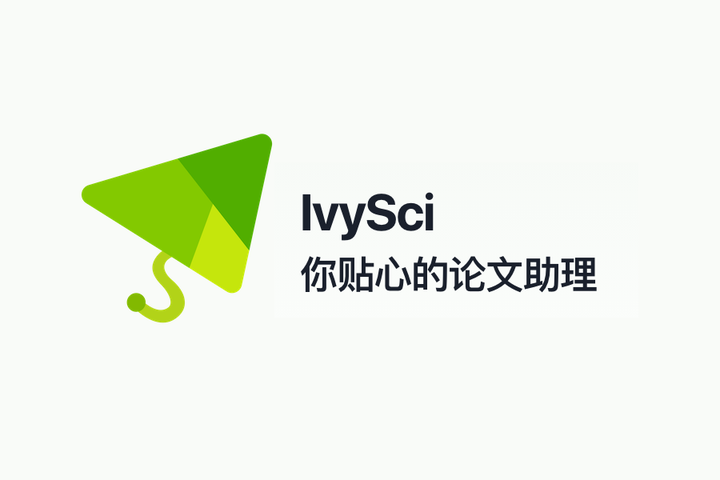Regional Economic Agglomeration and Trans-Sumatra Toll Road Development: A Network and Spatial Review
DOI:
https://doi.org/10.35166/jipm.v7i1.38Keywords:
Road Network, Space Syntax, Policy Evaluation, Economic AgglomerationAbstract
Road and transportation networks play a crucial role in interregional connections. One of the key development programs initiated during President Jokowi’s presidency in Indonesia is aimed at improving interregional connectivity. In Sumatra, the National Strategic Project (Program Strategis Nasional/PSN) for the construction of the Trans-Sumatra Toll Road has been underway since 2014. After a decade of development, it is essential to evaluate the impact of this infrastructure on the region's agglomeration to inform future development policies. This paper reviews the changes in network structures and economic activities as influenced by the construction of the Trans-Sumatra Toll Roads. It also seeks to predict the future development of agglomeration and economic activities. The study employs regional and city planning methodologies, including space syntax, fractal dimension analysis, and cluster analysis. The findings indicate that the construction of the Trans-Sumatra Toll Road has significantly enhanced connectivity and accessibility, increased the gravitational value of the territory, and reduced the load on existing roads. Moreover, the development of toll roads has led to the growth of new economic centers, which eventually resulted in the formation of four major agglomeration regions.
References
Afrianto, F. (2023). Fractal Dimensions Analysis of Urban Agglomeration at Road Intersections in Metropolitan Malang Raya. IOP Conference Series: Earth and Environmental Science, 1186(1), 012010. https://doi.org/10.1088/1755-1315/1186/1/012010
Afrianto, F. (2022). EAST JAVA PROVINCE GRDP PROJECTION MODEL USING NIGHT-TIME LIGHT IMAGERY. Universitas Airlangga East Java Economic Journal, 6(2), 208–223. https://doi.org/10.53572/ejavec.v6i1.83
Afrianto, F., Tri, D., Graha, R. (2023). Morfologi Kota Malang: Sebuah Tinjauan dari Nighttime Light Satellite Imagery. Jurnal Plano Buana, 3(2).
Berechman, J. (1994). Urban and regional economic impacts of transportation investment: A critical assessment and proposed methodology. Transportation Research Part A: Policy and Practice, 28(4), 351–362. https://doi.org/https://doi.org/10.1016/0965-8564(94)90009-4
Cervero, R. (2009). Transport Infrastructure and Global Competitiveness: Balancing Mobility and Livability. The ANNALS of the American Academy of Political and Social Science, 626(1), 210–225. https://doi.org/10.1177/0002716209344171
Chakrabarti, S. (2018). Can highway development promote employment growth in India? Transport Policy, 69(October 2017), 1–9. https://doi.org/10.1016/j.tranpol.2018.05.009
Chatman, D. G., & Noland, R. B. (2011). Do Public Transport Improvements Increase Agglomeration Economies? A Review of Literature and an Agenda for Research. Transport Reviews, 31(6), 725–742. https://doi.org/10.1080/01441647.2011.587908
Chen, Z., & Haynes, K. E. (2017). Impact of high-speed rail on regional economic disparity in China. Journal of Transport Geography, 65(September 2016), 80–91. https://doi.org/10.1016/j.jtrangeo.2017.08.003
Closs, D. J., & Bolumole, Y. A. (2015). Transportation’s Role in Economic Development and Regional Supply Chain Hubs. Transportation Journal, 54(1), 33–54. https://doi.org/10.5325/transportationj.54.1.0033
Cooper, C. H. V., & Chiaradia, A. J. F. (2020). sDNA: 3-d spatial network analysis for GIS, CAD, Command Line & Python. SoftwareX, 12, 100525. https://doi.org/10.1016/j.softx.2020.100525
Ding, Y., Hu, J., Yang, Y., Ma, W., Jiang, S., Pan, X., Zhang, Y., Zhu, J., & Cao, K. (2022). Monitoring the Distribution and Variations of City Size Based on Night-Time Light Remote Sensing: A Case Study in the Yangtze River Delta of China. Remote Sensing, 14(14). https://doi.org/10.3390/rs14143403
Graham, D. J. (2008). Agglomeration Economies and Transport Investment (pp. 93–116). https://doi.org/10.1787/9789282101834-6-en
He, S., Yu, S., Wei, P., & Fang, C. (2019). A spatial design network analysis of street networks and the locations of leisure entertainment activities: A case study of Wuhan, China. Sustainable Cities and Society, 44(July 2018), 880–887. https://doi.org/10.1016/j.scs.2018.11.007
Hillier, B. (2007). Space is the machine: a configurational theory of architecture.
Hou, Y. (2022). Agglomeration spillover, accessibility by high-speed rail, and urban innovation in China: A focus on the electronic information industry. Habitat International, 126(June), 102618. https://doi.org/10.1016/j.habitatint.2022.102618
Jia, S., Zhou, C., & Qin, C. (2017). No difference in effect of high-speed rail on regional economic growth based on match effect perspective? Transportation Research Part A: Policy and Practice, 106(di), 144–157. https://doi.org/10.1016/j.tra.2017.08.011
Jiao, J., Wang, J., Jin, F., & Dunford, M. (2014). Impacts on accessibility of China’s present and future HSR network. Journal of Transport Geography, 40(2014), 123–132. https://doi.org/10.1016/j.jtrangeo.2014.07.004
Jiao, J., Wang, J., Zhang, F., Jin, F., & Liu, W. (2020). Roles of accessibility, connectivity and spatial interdependence in realizing the economic impact of high-speed rail: Evidence from China. Transport Policy, 91(January), 1–15. https://doi.org/10.1016/j.tranpol.2020.03.001
Kalpana, L. D. C. H. N., Abenayake, C., Jayasinghe, A., Mahanama, P. K. S., & Sanjaya, N. (2021). A novel approach to measure the pattern of urban agglomeration based on the road network. International Journal of Sustainable Development and Planning, 16(2), 251–262. https://doi.org/10.18280/IJSDP.160205
Kementerian Pekerjaan Umum dan Perumahan Rakyat. (2016). Membangun Infrastruktur Pinggiran.
Olsson, J. (2009). Improved road accessibility and indirect development effects: evidence from rural Philippines. Journal of Transport Geography, 17(6), 476–483. https://doi.org/10.1016/j.jtrangeo.2008.09.001
Peraturan Presiden Republik Indonesia Nomor 18 Tahun 2020 Tentang Rencana Pembangunan Jangka Menengah Nasional 2020-2024, Pub. L. No. 18, Sekretariat Presiden Republik Indonesia 1 (2020).
Ren, Y., Tian, Y., & Xiao, X. (2022). Spatial effects of transportation infrastructure on the development of urban agglomeration integration: Evidence from the Yangtze River Economic Belt. Journal of Transport Geography, 104(August), 103431. https://doi.org/10.1016/j.jtrangeo.2022.103431
Sahu, S., & Verma, A. (2022). Quantifying wider economic impacts of high-speed connectivity and accessibility: The case of the Karnataka high-speed rail. Transportation Research Part A: Policy and Practice, 158(February), 141–155. https://doi.org/10.1016/j.tra.2022.02.011
Shen, G. (2002). Fractal dimension and fractal growth of urbanized areas. International Journal of Geographical Information Science, 16(5), 419–437. https://doi.org/10.1080/13658810210137013
Somenahalli, S. V. C., Taylor, M. A. P., & Susilawati, S. (2016). Road Network Accessibility and Socio-economic Disadvantage Across Adelaide Metropolitan Area. Transportation in Developing Economies, 2(2), 1–8. https://doi.org/10.1007/s40890-016-0020-y
Song, Y., Lee, K., Anderson, W. P., & Lakshmanan, T. R. (2012). Industrial agglomeration and transport accessibility in metropolitan Seoul. Journal of Geographical Systems, 14(3), 299–318. https://doi.org/10.1007/s10109-011-0150-z
Suthar, N., jeet Rajput, I., & kumar Gupta, V. (2013). A Technical Survey on DBSCAN Clustering Algorithm. International Journal of Scientific & Engineering Research, 4(5). http://www.ijser.org
Tan, R., Pan, L., Xu, M., & He, X. (2022). Transportation infrastructure, economic agglomeration and non-linearities of green total factor productivity growth in China: Evidence from partially linear functional coefficient model. Transport Policy, 129(September), 1–13. https://doi.org/10.1016/j.tranpol.2022.09.027
Tao, M., Huang, Y., & Tao, H. (2020). Urban network externalities, agglomeration economies and urban economic growth. Cities, 107(13), 102882. https://doi.org/10.1016/j.cities.2020.102882
The World Bank. (2019). Infrastructure Connectivity. Japan G20 Development Working Group, January 2019, 1–13.
Verma, A., Sudhira, H. S., Rathi, S., King, R., & Dash, N. (2013). Sustainable urbanization using high speed rail (HSR) in Karnataka, India. Research in Transportation Economics, 38(1), 67–77. https://doi.org/10.1016/j.retrec.2012.05.013
Vickerman, R. (2018). Can high-speed rail have a transformative effect on the economy? Transport Policy, 62(July 2016), 31–37. https://doi.org/10.1016/j.tranpol.2017.03.008
Wang, F., Wang, H., Liu, C., Xiong, L., & Kong, F. (2022). Does economic agglomeration improve agricultural green total factor productivity? Evidence from China’s Yangtze river delta. Science Progress, 105(4), 00368504221135460. https://doi.org/10.1177/00368504221135460
Wei, G., Li, X., Yu, M., Lu, G., & Chen, Z. (2022). Influence Mechanism of Transportation Integration on Industrial Agglomeration in Urban Agglomeration Theory—Taking the Yangtze River Delta Urban Agglomeration as an Example. Applied Sciences, 12(16), 8369. https://doi.org/10.3390/app12168369
Weisbrod, G. E., & Alstadt, B. B. (2007). Progress and Challenges in the Application of Economic Analysis for Transport Policy and Decision Making (Issue January 2007).
Xie, R., Fang, J., & Liu, C. (2017). The effects of transportation infrastructure on urban carbon emissions. Applied Energy, 196, 199–207. https://doi.org/10.1016/j.apenergy.2017.01.020
Yamu, C., van Nes, A., & Garau, C. (2021). Bill hillier’s legacy: Space syntax—a synopsis of basic concepts, measures, and empirical application. Sustainability (Switzerland), 13(6). https://doi.org/10.3390/su13063394
Ye, C., Sun, C., & Chen, L. (2018). New evidence for the impact of financial agglomeration on urbanization from a spatial econometrics analysis. Journal of Cleaner Production, 200, 65–73. https://doi.org/10.1016/j.jclepro.2018.07.253
Zhang, J., Liu, X., Tan, X., Jia, T., Senousi, A. M., Huang, J., Yin, L., & Zhang, F. (2022). Nighttime Vitality and Its Relationship to Urban Diversity: An Exploratory Analysis in Shenzhen, China. IEEE Journal of Selected Topics in Applied Earth Observations and Remote Sensing, 15, 309–322. https://doi.org/10.1109/JSTARS.2021.3130763
Zhou, Y., He, X., & Zikirya, B. (2023). Boba Shop, Coffee Shop, and Urban Vitality and Development—A Spatial Association and Temporal Analysis of Major Cities in China from the Standpoint of Nighttime Light. Remote Sensing, 15(4). https://doi.org/10.3390/rs15040903
Downloads
Published
Issue
Section
License
Copyright (c) 2024 Journal of Infrastructure Policy and Management (JIPM)

This work is licensed under a Creative Commons Attribution-ShareAlike 4.0 International License.















